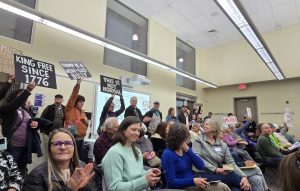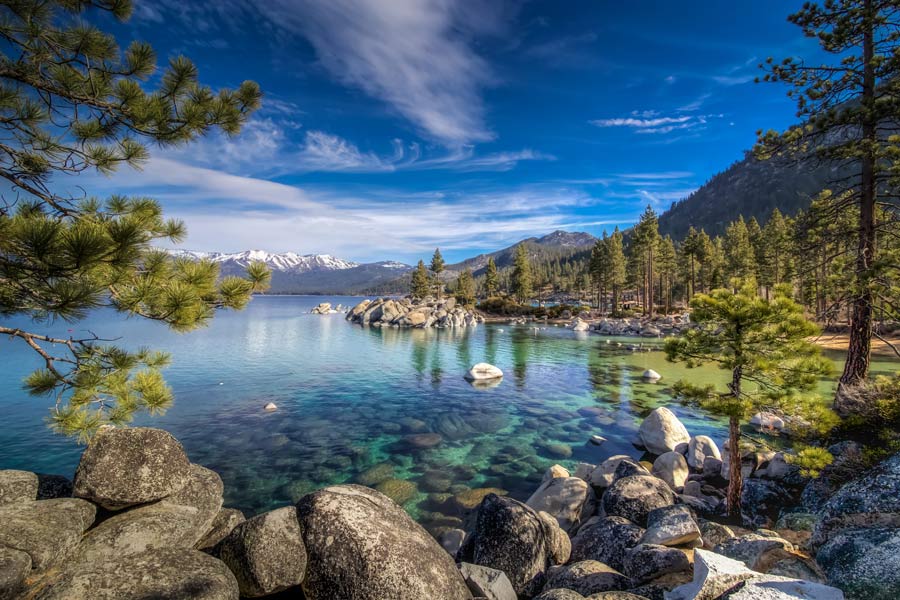Housing challenges and solutions around the lake: an overview
LAKE TAHOE, Calif./Nev. – With limited land, varying policies between counties, and environmental regulations to consider, it’s no wonder that housing development has been a challenge in the Basin. And after the COVID-19 pandemic increased remote workers who flocked to tourist destinations, housing issues for local workers were further exacerbated.
Though there are many similarities to housing issues around the Basin, each area faces its own set of challenges, from policies to land use to attitudes. But each area also has its own solutions. In this first article in the Tribune’s Housing Series, we’ll do a flyby of the current state of housing around the Basin, then dive into different topics as the series progresses.
Basin-wide challenges
Across the board, housing local employees is one of the biggest concerns in Lake Tahoe. Unlike other areas where bedroom communities and commuting is par for the course, travelling to Lake Tahoe through mountains or even inclement weather makes it a far less appealing option. But wages can’t keep up with the rising prices in Tahoe and many need support: deed-restriction, affordable and achievable housing programs, grants, and more.
While counties and cities make their own decisions about regional plans, zoning, and land use, they’re still subject to state laws—and between California and Nevada, those laws can differ significantly. On top of that, the Tahoe Regional Planning Agency (TRPA) has been making efforts to prioritize housing through changes to their codes, enabling more density and height along with deed-restricted housing. But even these can conflict with decisions made by cities or counties.
Land to build on is in short supply, especially because much of the land here is publicly owned. Permits from various entities and agencies from the local all the way up to state and federal levels would be necessary. Not to mention, building costs are high, costing as much as $600 per foot in some areas. Bringing building material up the mountain is expensive and most construction can’t be done during winter months. And environmental protection measures such as infiltration basins add more to think about for those looking to construct new buildings.
Even when looking at existing housing stock, many houses are unavailable because they belong to second homeowners who may be absent, unaware they own it, or prefer to rent them short-term rather than to long-term residents. Current housing can also be dated, making it hard and expensive to bring them up to code for long-term living.
Housing is also expensive—when comparing the area median incomes (AMI) from counties with residents both down the hill and in the basin, Lake Tahoe has a typically higher AMI, but with even higher prices for both renters and buyers. For everyone across the income spectrum, but especially for middle income earners, it can be challenging when no policies seem to address where you can live.
And of course, attitudes around housing do impact policy. While there’s a clear understanding that housing is necessary, there are concerns around what neighborhoods they’re in, who “deserves” to live there, and how it will impact current residents, whether that’s worries on if density will make fire egress more difficult or noise complaints from new neighbors.
Overall, though housing crises exist across the nation, Lake Tahoe faces unique challenges given the environment and policies—though the way each area deals with these issues can differ greatly.
Housing needs by the numbers
For the Californians in the basin, the state’s Housing and Community Development (HCD) department determines how much housing at a variety of affordability levels is needed for each region in the state. These numbers are typically underestimated, but local governments use them to kickstart their housing plans, also called housing elements.
In the city of South Lake Tahoe, the HCD estimated in 2020 that 289 units were needed to accommodate the population, 162 of which were to be affordable to moderate-income housing and below. The housing stock showed little growth from 2010 to 2019, with an increase of 0.55%, which the housing element attributes in part to “strict TRPA growth regulations that limit housing construction.” Of the 8,832 vacant units identified in counts collected from 2013 – 2017, nearly 50% of South Lake Tahoe’s available housing stock was for season, recreational, or occasional use.
In the unincorporated Tahoe Basin, the HCD estimated that 435 units were needed for Placer County, while 359 were needed for El Dorado County.
Placer County has seen high growth, but their housing element also states that “the high vacancy rates in Placer County is due primarily to the predominance of vacation homes in the Lake Tahoe area. In 2017, 82.6% of vacant housing units were for seasonal, recreational, or occasional use. Vacation homes and rental homes in East Place continue to limit workforce housing near Lake Tahoe.”
Second homeownership in El Dorado County has remained relatively stable at around 78% for the entire county since 2015.
Truckee’s housing element indicates that the HCD, using data in 2018, estimated that they needed 755 units, with 455 of those addressing moderate income and below affordability. 55.3% of the housing units in Truckee were vacant, with 7,318 units used for seasonal or occasional use.
Nevada does not have the same housing needs allocation program that California has, so further data has been taken from the Washoe Tahoe Housing Needs study.
Douglas County has not yet had their housing needs assessment completed by the University of Nevada, Reno, so there is little recent data on the needs of housing there, let alone for the Basin.
In 2020, it was estimated that 4,090 units were vacant the Tahoe region of Washoe County, an increase of 3.2% in the past decade, and representing over half of the 7,960 housing units in the area. “The high part-time resident, second homeowner, and vacation use means fewer homes and increased housing costs for residents,” says the 2021 Washoe Tahoe Local Employee Housing Needs and Opportunities report. “Such areas have an ‘occupancy problem,’ rather than necessarily a supply problem.” Only 103 rentals in Washoe Tahoe are apartments, while single-family units and townhouses account for over 90% of the units.
According to data from the Tahoe Prosperity Center (TPC), throughout the Basin, only 21% of the population is able to afford the median house price, with the lowest percentage on the East Shore at only 10%. And similarly, only 21% of the population is able to afford the median house rent. The TPC states, “The workforce in the Tahoe Basin is disproportionately housed in rental housing and has few ownership opportunities.”
As more residents find it increasingly difficult to maintain a home in the region, the decision to move out of the area becomes more appealing, displacing families, employees, and community members to less costly areas. Population growth continues to stagnate here in the basin while people move to easier to afford areas like Reno and Carson City.
Eli Ramos is a reporter for Tahoe Daily Tribune. They are part of the 2024–26 cohort of California Local News Fellows through UC Berkeley.

Support Local Journalism

Support Local Journalism
Readers around the Lake Tahoe Basin and beyond make the Tahoe Tribune's work possible. Your financial contribution supports our efforts to deliver quality, locally relevant journalism.
Now more than ever, your support is critical to help us keep our community informed about the evolving coronavirus pandemic and the impact it is having locally. Every contribution, however large or small, will make a difference.
Your donation will help us continue to cover COVID-19 and our other vital local news.










